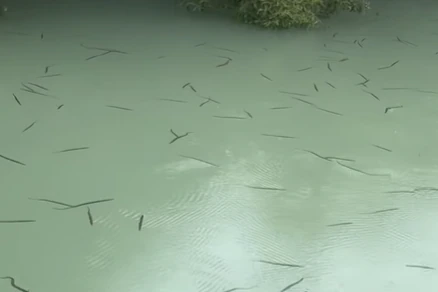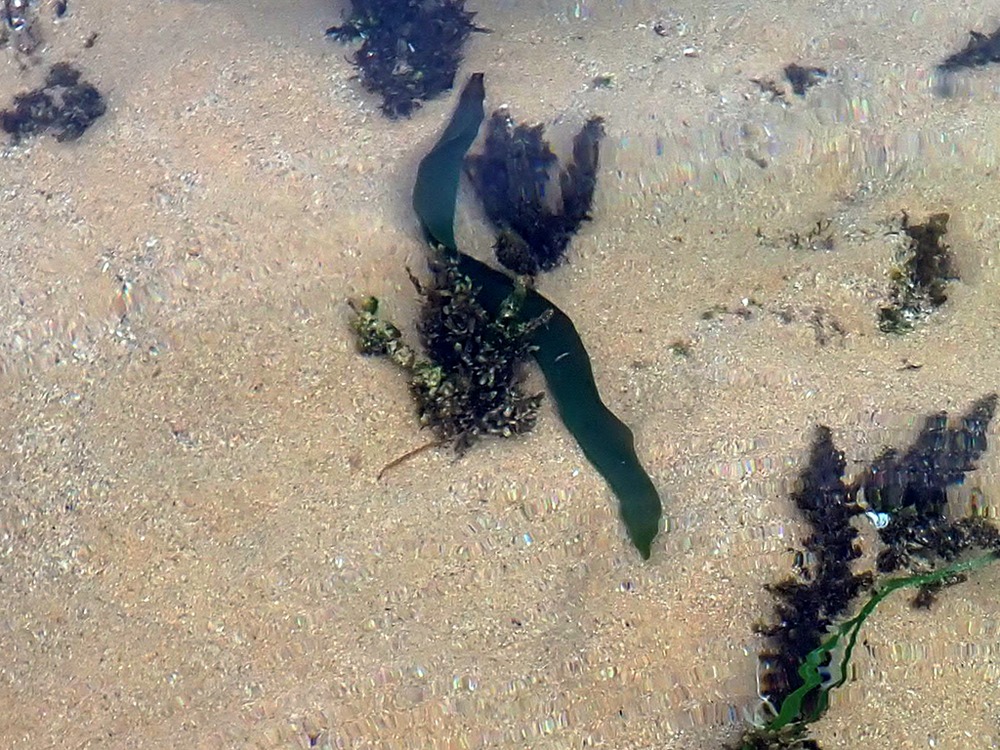Someone here posted a photo of a long green eel-like creature in a rockpool a little while ago that they could not identify. The worm in this post might be something similar and answer the question.
>>As far as the eye can see, worms swarm along the water’s surface in what looks like the apex scene of a sci-fi thriller.
Despite fishing in North Queensland waters for decades, it was a sight Robert Norris, 50, had never seen before.
He and his daughter had been mud crabbing in Waverly Creek near St Lawrence when they noticed the worms.
“They just kept coming — more and more just kept coming out of the mangroves,” Mr Norris said.
“They were everywhere around the boat.
“I’ve grown up in the Mackay area and have been fishing and crabbing and stuff my whole life and I’ve never seen this.”

Mr Norris said the worms appeared to be coming out of the mangroves.
While pulling up one of the crab pots, his daughter bumped one of the worms and it “literally just fell apart” with green goo “spewing out of it”.
The pair caught on in a bucket for a closer look.
“They were probably anywhere from 200 to 250 millimetres long and about eight to 10mm wide at their widest part,” Mr Norris said.
“They sort of look like a flatworm.
“They’re not a roundworm like a garden worm … and with little legs all around their body.
“They’re very soft — when you touch them they just fall apart … like when a gecko drops his tail.”
Mr Norris got in touch with some of his angler mates and told them what he had seen.
He said some reported spotting the worms before, but all were gobsmacked by the sheer number of them.
Australian Museum senior fellow Pat Hutchings has dedicated her life to the study of polychaetes, commonly known as sea worms.
“ is actually quite a common phenomena, but probably something most people don’t ever see,” she said.
Dr Hutchings said the worms belong to the Nereididae family, commonly known as ragworms.
She could not identify the exact species from watching the video and believed there was a chance it was not yet known to science.
“A large proportion of our invertebrate fauna is still undescribed,” Dr Hutchings said.
She estimated that only about 30 per cent of Australia’s biodiversity is documented.

The worms give their own lives to reproduce.
Dr Hutchings said the worms usually lived in muddy sediment but come together in the water to spawn, shedding their eggs and sperm, which accounted for the “green goo” Mr Norris’s daughter saw spilling out of one.
Many species of sea worms fall apart and die after spawning, which Dr Hutchings said was a process that occurred at least once a year for most varieties.
Lunar phases, temperature and salinity can trigger a spawning event and marine biology associate professor Ian Tibbetts said the recent rainfall in North Queensland may have had an impact on creatures in the waterways.
“What a does is push the salinity of the estuary down so it becomes more fresh, and a lot of organisms will move to to try and stay in the same sort of saltiness of water,” Dr Tibbetts said.
Dr Hutchings said there was still so much to learn about how mangrove mudflats functioned, as well as sea worms in general.
https://www.abc.net.au/news/2024-01-14/spawning-sea-worms-swarm-fishers-boat/103314834

